Thomas Blood, Rebel Adventurer and Thief
There’s a cynical modern saying: “Steal a hundred pounds, go to jail. Steal a hundred grand, get a book deal.” This is far from a modern phenomenon. Throughout history those who commit audacious crimes have sometimes been rewarded rather than punished, though it’s not a mercy you should rely on. Perhaps the greatest example is Colonel Thomas Blood, a man who spent ten years rebelling against the English Crown culminating in an attempt to steal that very crown. By the letter of the law he had earned the death penalty many times over, but it wasn’t the hangman’s noose that destiny had in store for him.
Thomas Blood was born in Ireland sometime around 1618. He was probably born in the town of Sarney in County Meath, though it’s hard to say for sure. His father had originally made his money through owning and operating an ironworks, then invested it in lands. This led to him being described as “the son of a blacksmith”, but that gives entirely the wrong impression about how well off his family were. His grandfather Edmund Blood had come to Ireland in the service of Elizabeth I, then stayed on and become a member of the Irish Parliament. [1] Though Thomas’ father (also called Thomas) was only a younger son, he still inherited the seed money to begin his business empire.
As was usual for the sons of Protestant landowners at the time, Thomas was sent off to school in England. He studied in Lancashire, where he had family. That was where he met Maria Holcroft. At least according to some reports, others put their marriage ten years later. If this was when they met, it was probably through both being members of a fairly fringe religion in England at the time: they were Presbyterians. Maria’s father John Holcroft was a member of the landed gentry, as were the Bloods; it would have been a “good match”. By these accounts Thomas married the 17-year old Maria in 1638 at the age of twenty, and the newlyweds then moved back to Ireland.
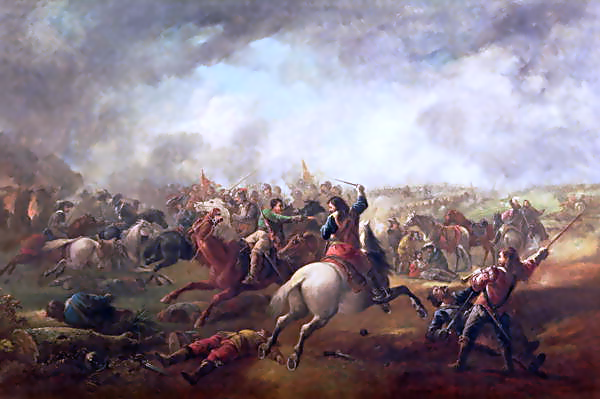
Young Thomas Blood seems to have shown a great deal of promise, as he was made a Justice of the Peace at the surprisingly young age of 21. This may have been due to the troubled times, though. England was on the brink of civil war, and Irish rebels sensed weakness. In 1641 rebellion broke out among the Catholic members of the Irish gentry, who feared invasion by the increasingly hardline Protestant parliament of England. Naturally Protestant gentry like Thomas Blood lined up on the opposite side under James Butler, duke of Ormonde. But the war in Ireland touched off a civil war in England, and Thomas headed back across the Irish sea to fight in the army of Charles I.
Unlike the clear-cut Catholic versus Protestant narrative in Ireland, matters in England were much muddier. His father-in-law Thomas Holcroft stood on the opposite side, as did most English Presbyterians. Thomas stayed loyal to the Crown, at least for now. It’s thought that he might have been captured by the Parliamentarians at the siege of Sherborne and then freed on parole to go back to Ireland for his father’s funeral in 1645. He was still in Ireland when the fighting ended with the King’s capture by Parliament in 1646.
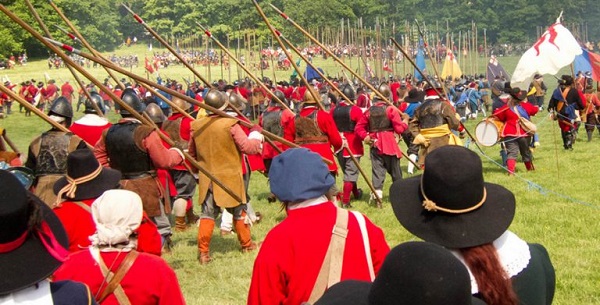
The fighting broke out again in 1648 and Thomas headed back into the fray. Initially he still fought on the Royalist side, and there was a story (popularised in one of his early biographies) that he was behind an attempt to kidnap the man who had led the siege of Sherborne. It soon became clear that the Royalist side was doomed, and like a lot of men fighting for glory rather than beliefs Thomas switched sides after the execution of Charles I. In 1649 he became a cavalry officer in Cromwell’s forces.
According to some accounts, this was actually when he first met and married Maria Holcroft. Though the 1638 date of his marriage is more widely spread, the idea that he married her in 1650 is more likely for a few reasons. Firstly her father was an MP and an officer in the Roundheads, putting him right into Thomas’ circle. Secondly, their first child was born in late 1650. If they’d been married earlier, it’s more likely that she would have been with Thomas’ family in Ireland. (Though the timing of the birth puts a different complexion on the marriage entirely, of course.)
The war in England came to an end in 1651, but fighting continued in Ireland for the next two years. Thomas returned to his homeland with Cromwell’s forces and took part in the notoriously brutal suppression of the Irish rebels. Following this fighting, Cromwell instituted land confiscations and redistribution that saw the percentage of Irish land in Catholic hands reduced from 60% to 8%. Some of this land was sold to pay off government debts, and some was given in land grants to Parliamentarian soldiers. Thomas was one of those soldiers, making him wealthy enough to retire from military life in comfort with his wife and son.

John Holcroft, father in law to Thomas, died in 1656. He was a wealthy enough man and his estate became the subject of legal battles, but Thomas was well enough off at the time to not need to get drawn into them. More significant to him was a death in 1658, that of Thomas Cromwell. Though the rest of the Parliamentary side tried to hold together, it became clear that without their lynchpin they were doomed to fall apart. In 1660 it was declared that Charles II was the lawful ruler of England. Thus began the fall of Thomas Blood’s fortunes.
The Indemnity and Oblivion Act meant that people like Thomas who had fought for Parliament were safe from prosecution, but the land seized by Cromwell in Ireland was another matter. The land seized from the rebels of the Catholic Confederacy was not going to be returned, of course. But those who had fought as Royalists or who had not taken part in the Confederacy were allowed to put in claims to retrieve their lands. This led, of course, to bitter disputes and grievances. One of those impacted was Thomas Blood, who lost 85% of “his” land. Most of what he was left with was barren mountain territory. At a stroke he was reduced from prosperous landed gentry to being forced to rely on the support of relatives.
Thomas might have sought some relief in his wife’s inheritance, but her father’s estate was still the subject of furious legal dispute. (At some points the dispute spilled out of the courtroom; the dead man’s eldest son and several heavily armed companions broke into his mother’s house late at night to menace her.) Another trial to Thomas was the Act of Uniformity in 1662, a law targeting Protestant “dissenters” such as Presbyterians like him. It’s not surprising that some people’s thoughts began to turn back to violence.
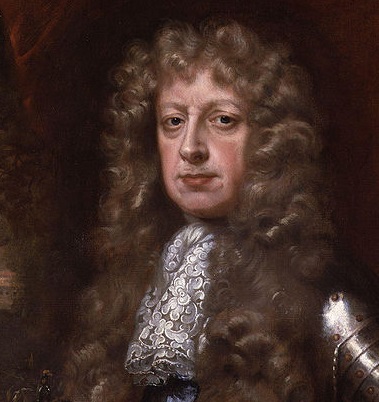
A conspiracy began in 1662 to attack Dublin Castle and kidnap the Lord-Lieutenant, with the date being set for March of 1663. Fifty troops were persuaded over to the cause, along with several MPs in the Irish Parliament. Luckily for James Butler, one of his spies discovered the plot and it was thwarted. Unluckily, he thwarted it before any overt action had been taken and he was unable to round up the ringleaders. Thomas Blood was one of those ringleaders, and he was left free to continue to plot.
The plot was resurrected in April, with Thomas Blood set up as the “front man” for the conspiracy. He was to lead the assault on Dublin Castle, and his name was put as the author of their declaration of intent. This was more down to his charisma and military profile than to any actual leadership role he performed, though. The true head of the conspiracy was probably Stephen Charnock, a Presbyterian minister who had been chaplain to the Parliamentarian government of Ireland. The rank and file knew nothing about Charnock, and believed Thomas was their leader.
Unfortunately for the conspirators one of their inner circle was an informer (named Philip Alden). Equally unfortunately an attempt to recruit Sir Theophilus Jones (a military leader who had served under Cromwell) went wrong as Jones reported all the details to the Lord-Lieutenant. The plan was for a group disguised as petitioners to the Duke to infiltrate the castle and overpower the gate-guards, after which Blood and a hundred men would storm the castle. After they had control of the Lord-Lieutenant, a signal would be sent north and an Ulster-Scot rebellion would begin. Before they could make their move, the government struck.
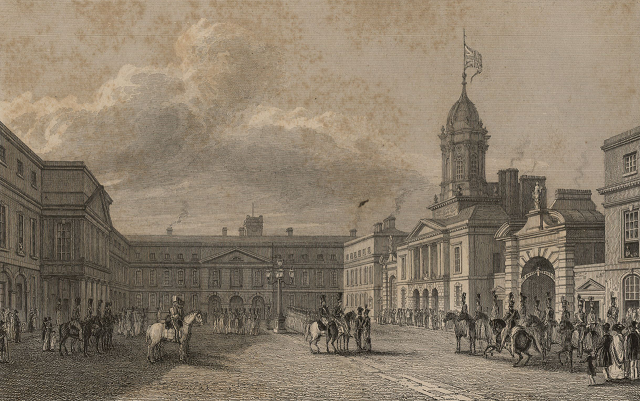
The raids swept up twenty-four of the key conspirators in the early hours of the morning. Thomas managed to escape, but proofs of his involvement (including the rebels’ declaration in his own handwriting) were plentiful enough that a hefty reward of one hundred pounds was offered for his capture. Despite that he remained in Dublin until it became clear the conspiracy was destroyed, then headed north to Antrim to seek shelter among his Ulster-Scots allies. He was aided by rumours that he had fled to Scotland, known to be a centre of dissenter sentiment.
Thomas managed to avoid the manhunt, as he had by now become an infamous figure. (The lord-lieutenant even increased his bodyguard for fear Thomas would return and try to assassinate him.) For a short time Thomas even pretended to be a Catholic priest on the run, in order to take advantage of the Catholic network that supported them. Eventually he made his way down to Wicklow, where he stayed in hiding for some time and even secretly visited his wife and children on occasion.
By 1664 Thomas was back across the water in England, paying a visit to his widowed mother-in-law and becoming embroiled in a plot to seize the king in London. This was his Dublin scheme on a larger scale, but it met the same fate: undone by the Stuart intelligence service. This was organised by a group known as the Fifth Monarchists, who believed that the Second Coming was due in 1666 and that it was their holy duty to overthrow the king before then. Nothing came of this plot, nor one back in Ireland to stage a rebellion in Limerick. So in 1666 Thomas headed to Holland in search of exiled Parliamentarians to help his cause.
In an ironic twist, as soon as Thomas and his companion John Lockyer arrived in Holland they were arrested by the Dutch police as suspected English spies. Luckily for them John Phelps was visiting the Netherlands at the time. He had acted as clerk at the trial of King Charles I, which was enough to get him exempted from the Indemnity and Oblivion Act and force him to go on the run in Europe. Naturally his vouching for the men proved they were no friends to the English crown.
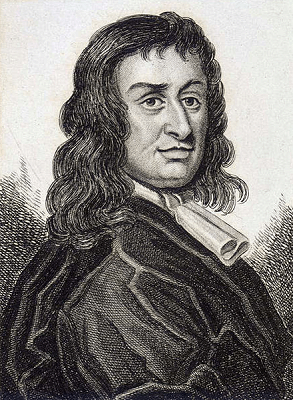
Over the next few years Thomas Blood became a boogeyman to the English establishment, with “Colonel Blood” being blamed for everything from the Great Fire of London to the Pentland Rising in Scotland. In fact he had decided to retire from the rebel’s life, and was living quietly in Romford under the alias of “Doctor Ayliff”. His family didn’t live with him, but instead moved to north London (not far away) where they took the surname “Weston”. He broke cover in 1667 to mount the rescue of an old friend being taken to York for trial. He was successful but was seriously wounded, and rumours of his death began to circulate. This allowed him to disappear again.
Thomas Blood spectacularly reappeared in December of 1670 with an attack on an old enemy: James Butler, Duke of Ormond and former Lord-Lieutenant of Ireland. With a gang including his eldest son (who he had just bailed out from being arrested as a highwayman), Thomas held up the Duke’s coach at gunpoint and dragged him out into the street. Their plan was to take him to a nearby gallows and hang him as a common criminal, but Butler managed to break lose from his guard and escape to his home nearby. Thomas and his cohort were forced to flee the scene.
This attack on a Duke of the realm in the heart of London prompted outrage and panic in the capital. A massive reward of £1,000 was offered for any information on the attack. Thomas was soon identified as “Ayliff”, but it wasn’t until later that they realised he was also “Colonel Blood”. Despite this the investigation came to naught; possibly, it was suspected, because it had been financed and organised by another Duke.
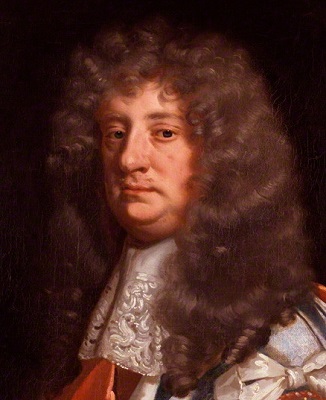
George Villiers, the Duke of Buckingham, was a mortal enemy of Butler and would later prove to be a friend of Thomas Blood. The “fact” that Villiers had hired Thomas Blood to assassinate Butler soon became one of those things that “everybody knew”, regardless of whether it was true or not. Thomas Butler, son of the Duke of Ormond, was convinced enough that he told Villiers in the presence of the king:
…if my father comes to a violent end by sword or pistol; if he dies by the hand of a ruffian, or by the more secret way of poison…I shall consider you the assassin. I shall treat you as such and wherever I meet you, I shall pistol [shoot] you, though you stand behind the king’s chair.
In the spring of 1671, a few months after the attack on the duke, a clergyman and his wife visited the Tower of London to see the Crown Jewels. These were new regalia, as the originals (some of which dated back before the Norman Conquest) had been destroyed by Parliament before the Restoration. It was normal for the keeper of the jewels (Talbot Edwards) to show them to tourists for a fee, so he thought nothing of it. When the young wife became ill, the keeper and his wife let her rest in their room for a while, and when the clergyman returned with a gift to thank them for this, a friendship developed.
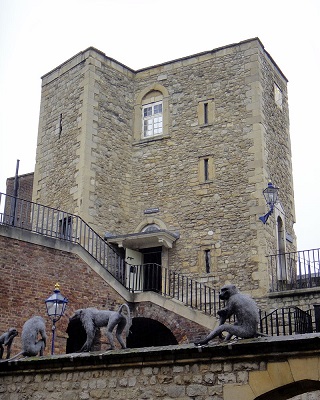
Of course, there was more going on than met the eye. The clergyman gave his name as “Doctor Ayliff”, but he was actually Thomas Blood. The woman was not his wife Mary, but a young Irish actress he had hired to play the part. When he bought the pistols he spotted displayed on the wall “as a present for his neighbour”, it was actually to make sure there were no guns on the premises. And when he offered to introduce his eligible young nephew to the keeper’s pretty young daughter, that was setting the scene for the most audacious exploit of his career.
At 7am on the morning of the 9th May 1671 the alleged clergyman arrived at the Tower, along with his “nephew” and several “friends”. He explained this to the Edwards by saying that these friends were visiting London, and that they wanted to see the Crown Jewels. He also added that his wife would be late, and asked if they could see the jewels while they waited. So (after pocketing his fee) Edwards unlocked the room holding the royal regalia. That was when they struck.
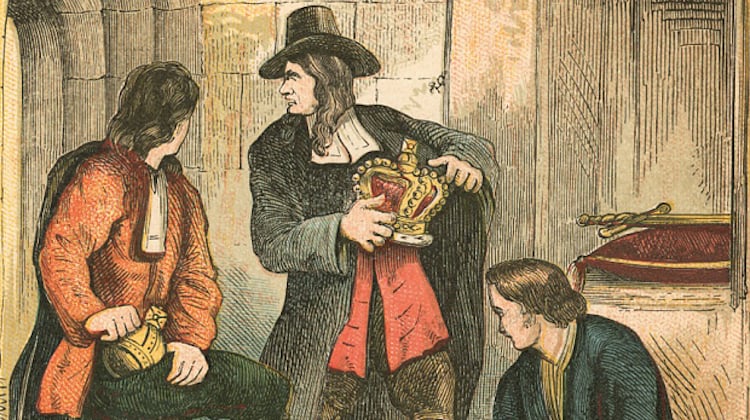
A cloak was thrown over Talbot’s head, and he was swiftly gagged and bound. They told him that if he made no noise, they would not harm him. To his credit, the old keeper tried to make enough noise to warn those outside but was swiftly stabbed and beaten to the ground with a wooden mallet. The reason for this mallet was to flatten one crown, which Thomas stowed under his coat. Another thief stuck the sovereign’s golden orb of state down his breeches, while Thomas Blood junior (who was again along on this caper) began cutting one of the sceptres in half. It was around this time that the heist began to go wrong.
The one thing that Thomas hadn’t accounted for was Talbot’s son Wythe, who had just returned on leave from the army. Wythe had not sent word of his arrival ahead, as he wanted to surprise his family. The man on guard for the thieves tried to ask him who he was, but Wythe ignored him and headed upstairs to greet his family. The guard immediately headed in to the strongroom and warned his comrades, who grabbed whatever they could and fled. Behind them Talbot managed to get his gag free and call for help, drawing his daughter who raised the alarm.

The thieves hastened away from the scene. They were spotted by the guards, but shots from their pistols scattered them. Once through the gate they began running and shouting “Stop the rogues!”, making any passers by think that they were in pursuit rather than fleeing. However they were not fast enough to outrun Wythe and Captain Martin Beckman, an engineer who was in charge of the weaponry stored in the fortress. The thief with the orb (Joshua Perrot) and another were captured, though Thomas junior and the man who had stood guard escaped. As for Thomas Blood, he was caught up to by Beckman who made a grab for the bag under his coat. After a brief tug of war, Thomas was overpowered and captured. He was unabashed, and told his captors:
It was a gallant attempt, however unsuccessful…it was for a crown!
Thomas junior was captured trying to flee the city, when he was recognised as the highwayman “Tom Hunt”. Father and son were imprisoned in the same Tower they had tried to rob. They were facing execution as their best option, with the worst being to be “hung, drawn and quartered”: a nice euphemism for being tortured to death in front of a cheering crowd. But fate had one more twist for Colonel Blood.
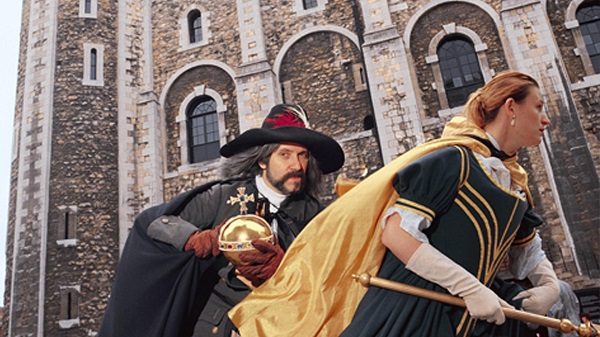
Of course, even in this era before mass media the story of this “audacious enterprise” was huge news. The London Gazette (a subscription-only newspaper commissioned by the royal court) included a full history of Thomas Blood’s exploits since his attempted rebellion in Ireland. Our main source of news from the time is the letters that ambassadors sent back to their rulers, which included reports of allegations that the French or the Italians were the “real” culprits. Nobody took these seriously though, especially with the thieves in custody.
It’s not surprising that Thomas insisted he would only answer questions put to him by King Charles himself; after all what did he have to lose? It’s more surprising that Charles agreed to meet him. Officially this was due to curiosity to see this infamous rebel. Unofficially it’s been speculated that the Duke of Buckingham (and his ally, the King’s mistress Barbara Palmer) might have warned the king that Thomas knew things that shouldn’t be repeated in open court. Or Charles might have seen the value of making this notorious rebel an informant. Either way James Butler was pessimistic (from his point of view) about the meeting.
Surely, no king would wish to see a malefactor but with intention to pardon him.
Supporting the theory that Buckingham was behind the audience, Thomas immediately admitted leading the assault on the Duke of Ormonde but insisted it was on his own account in revenge for the Duke’s actions in Ireland. He refused to name his accomplices in the theft, on grounds of honour, but was apparently shocked to learn that the jewels were worth only about a twentieth of what he had thought. Also present at the meeting was Prince Rupert of the Rhine, a daughter of Elizabeth Stuart (link!) who had been a general during the Civil War. He remembered Thomas from his service to the Royalists and testified to his bravery.
What is supposed to have clinched Thomas’ pardon, though, was a story he told about having made an attempt on the king’s life while Charles was swimming out at Battersea. He said that he had taken his sights on the king with his rifle, but had second thoughts when he realised that Charles was far better than those who might succeed him. (This was possibly a veiled reference to the King’s Catholic brother James.)
The meat of Thomas’ confession was offer to help take down his former comrades for the king. This was made clear by the King when he asked him what he would do if his life was spared. “I would endeavour to deserve it”, was the reply. (At the time he was aware of a plot to storm the House of Lords with 300 men and murder the king, but he kept this to prove his worth if his offer was accepted.) He was then returned to the Tower, while the king considered the matter.
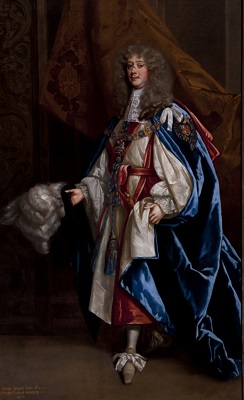
Thomas Blood’s main ally in the court was not the Duke of Buckingham, despite theories connecting the two. Rather it was Henry Bennet, the Earl of Arlington, who was pushing for him to be pardoned. Bennet was one of Charles’ spymasters, and he saw great potential in “turning” the notorious Colonel Blood. For example, a war with the Dutch was looming, and they would be natural allies for dissenters staging an anti-Anglican revolt. Thomas would be invaluable in dealing with that threat.
One condition of Thomas being pardoned was that he apologise to James Butler, which he did. Butler accepted the apology gracefully, not that he had much choice. With that out of the way, Thomas Blood and Joshua Perrot were given their pardon and officially released in August of 1671. (Thomas junior was not released at that time, but he got a pardon later.) Thomas was also given rewards (including the lands in Ireland that he had forfeited on turning traitor) for exposing various conspiracies that he was aware of. All of a sudden the notorious Colonel Blood was now a respected man about court.
This sudden shift in fortunes astonished many people. Diarists from the era are united in being sure that “something deeper was going on”, and in fact any value Thomas might have had as a spy was probably instantly burned. It’s speculated that this was a deliberate act by Bennet to be a showy demonstration that pardons were available to any dissenters who turned on their comrades. But that was lost on the satirists of the court, one of whom wrote:
Blood that wears treason in his face
Villain complete in parson’s gown
How much he is at court in grace
For stealing Ormond and the crown!
It’s not fair to say that Thomas did nothing to earn his pardon. During the Anglo-Dutch War he spent some time in Holland on a spying expedition (counting warships and convincing dissenters in exile to come home peacefully). He also decrypted letters seized by the King’s spies sent between dissenters and the Dutch, and carried messages to contacts in Dublin.
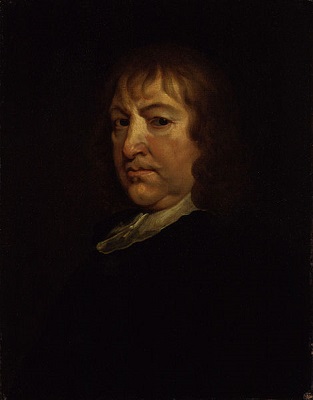
Thomas tried to win back the good graces of his fellow Presbyterians by acting as an ambassador for them at court, for example by helping to release some who had been imprisoned for not paying their fines. He found his biggest opportunity in 1673 when laws were passed allowing for non-Anglican Protestant church meetings to take place as long as they were properly licensed. Thomas earned a lot of favour (and a lot in fees) by helping dissenter worship groups to put in their applications for a license.
Thomas knew that his position at court was precarious, so he did his best to use it to gain more long term respectability for his family. His son Thomas, who had been at his side in so many escapades, sadly did not benefit from this. He died in 1675, leaving behind a young son of his own. This son was adopted by Holcroft, the third Blood son. Holcroft (named for his mother’s family name) was the most successful member of Thomas’ family. He had run away from home in 1672 as a teenager to join the navy, and had a distinguished military career that ended with him reaching the rank of Brigadier-General. Both of his surviving brothers also joined the navy, though neither were quite as successful.
Thomas also tried to use his influence to finally settle the matter of his father-in-law’s fortune. By now the ongoing legal battle had led to at least one cold-blooded murder (of the unfortunate Hamlet Holcroft). The courts were unmoved, and the estate went to someone else. It was a sign that Thomas was not as powerful as he thought he was, and proof that his fall from grace would eventually come.
For some time he seemed to be on a roll, though. For example, he uncovered a plot by the MP Robert Peyton and the members of his Green Ribbon Club to murder the king and establish a republic. The plot was thwarted, but Peyton was too powerful to be arrested. In the end though Thomas became a casualty of a war between figures far more powerful than him, and a plot to take down his old patron the Duke of Buckingham.
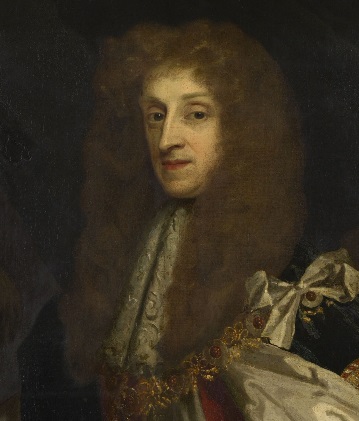
The Earl of Danby, Thomas Osborne, was a sworn enemy of the Duke after he had been impeached in 1679 for corruption in his role at the Treasury. He had concocted a plot to “prove” a rumour that the Duke had sexually assaulted a servant girl named Sarah Harwood. (This would hardly have ruffled any feathers except that the assault allegedly included sodomy, a capital crime at the time.) Witnesses were bribed and the fix was apparently in…except that Osborne was even less popular than the Duke and his witnesses did not stay bought. When the truth came out the Earl was clearly too powerful to pay any real price for it, but those he had hired as go-betweens were fair game. One of those go-betweens was Thomas Blood.
The Duke of Buckingham was irked by Blood having “betrayed” him, and he brought a libel suit against him for ten thousand pounds. This was a fantastic amount of money for the time, and Thomas was imprisoned for several days in 1680 before he could find anyone to stand his bail. The stress of imprisonment along with his impending trial was too much for the sixty-two year old Thomas to take. He fell ill with a fever, and after a few weeks Thomas Blood died.
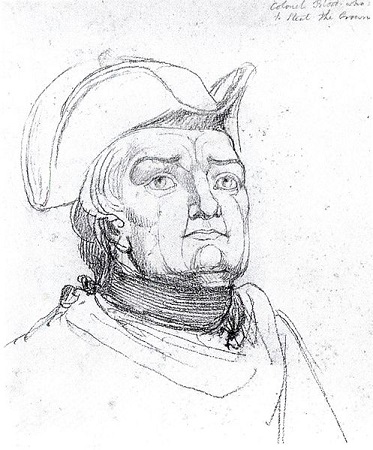
Though Thomas was nowhere near as notorious as he had been ten years earlier, he was still well-remembered enough for people to talk about his death. A rumour soon began to sweep the capital that this was another of his schemes, and that he had faked his death to avoid his upcoming court case. This soon became widespread enough that the authorities had to act. Less than a week after his funeral, the grave of Thomas Blood was opened up and his corpse exhumed. The hot weather meant that it was badly decomposed, so much so that the face was unrecognisable. An injury on the hand was identical to one that Thomas had, but that wasn’t enough for it to be legally declared his body. So the corpse was reburied, but the rumours persisted. Had the infamous Colonel Blood managed to put one over his enemies, right at the very end? We’ll never know for sure.
Images via wikimedia except where stated.
[1] He was also the ancestor of Gertrude Elizabeth Blood, who we have covered before as one half of the most notorious divorce trial of the 19th century.
